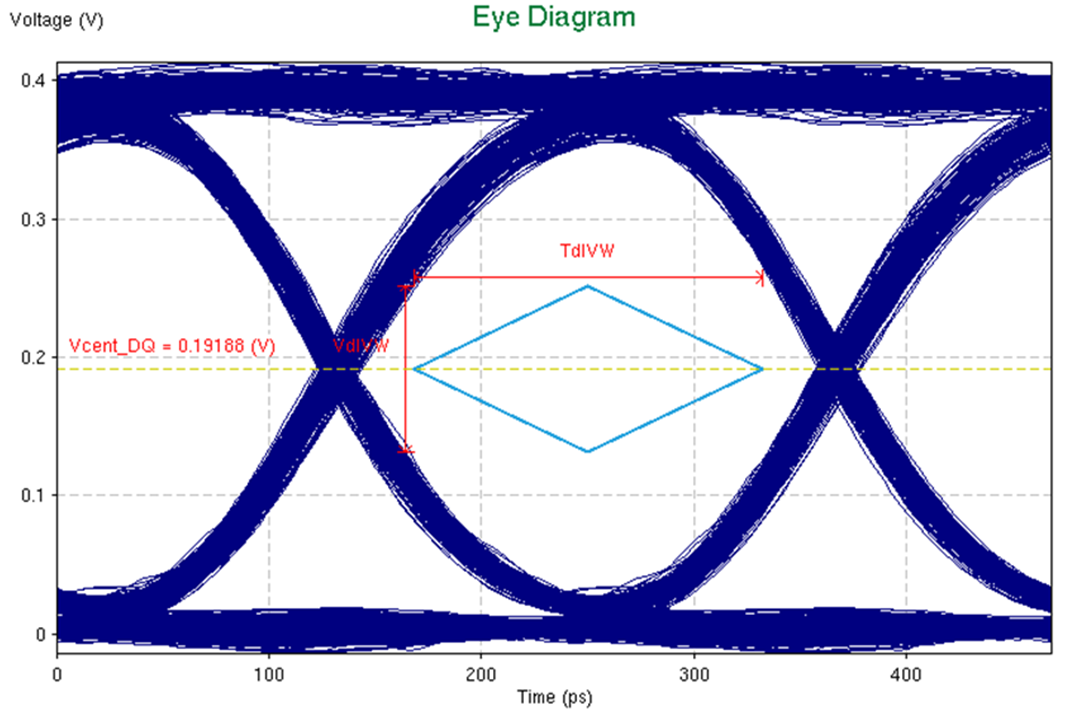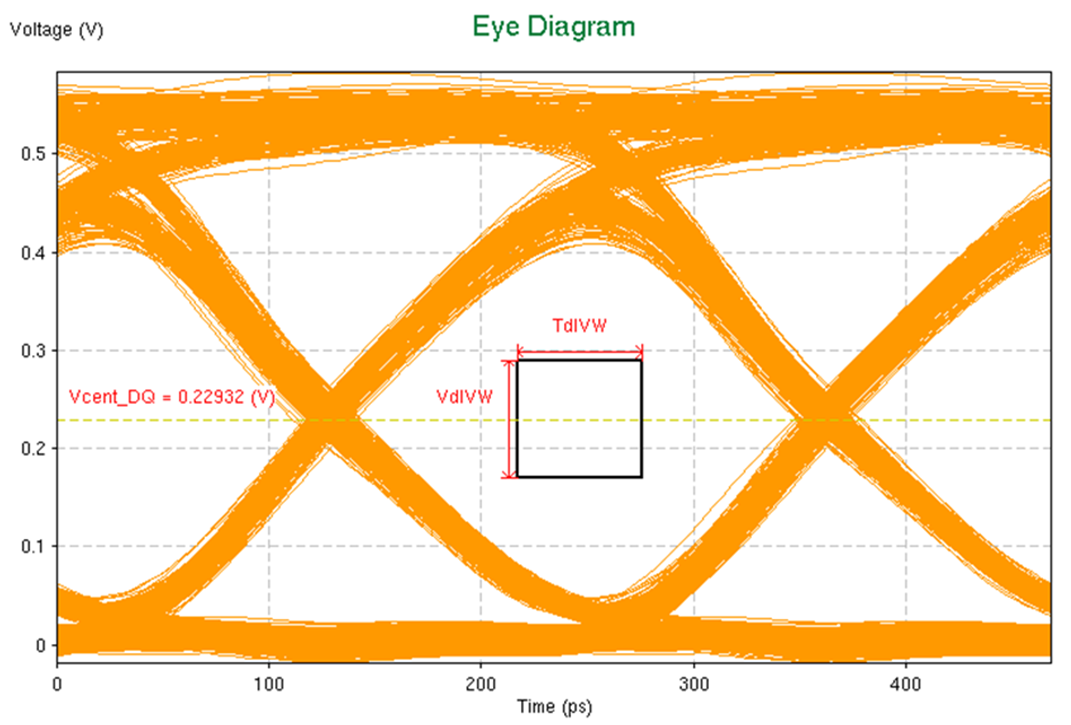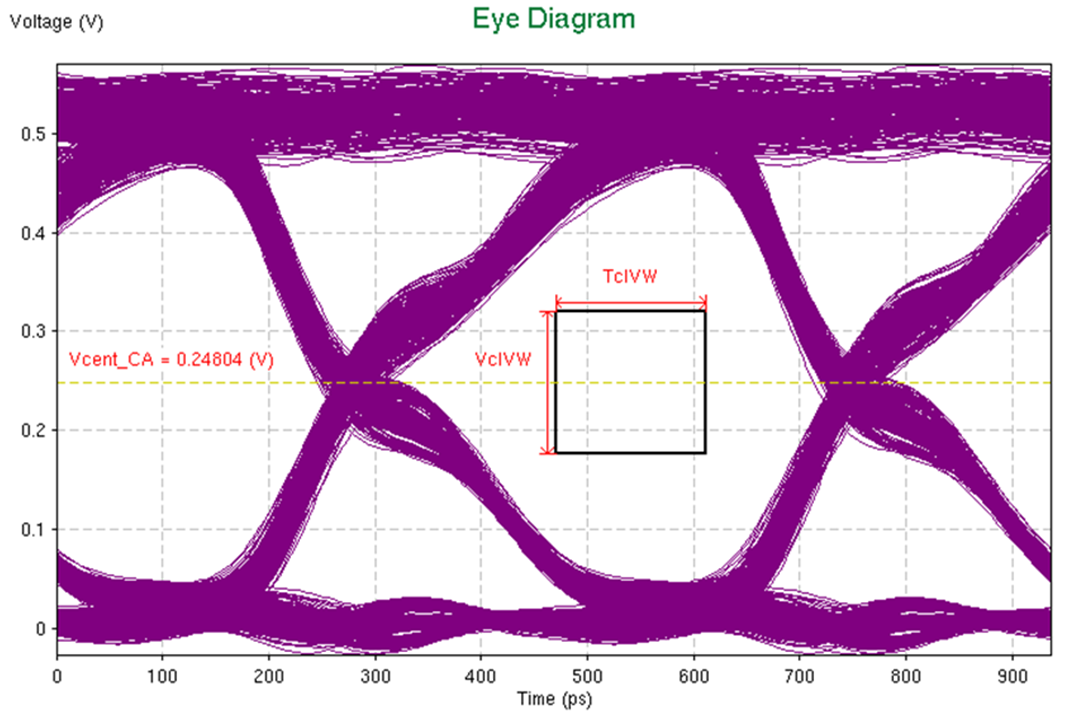SPRACN9F May 2023 – August 2024 AM67 , AM67A , AM68 , AM68A , AM69 , AM69A , DRA821U , DRA821U-Q1 , DRA829J , DRA829J-Q1 , DRA829V , DRA829V-Q1 , TDA4AEN-Q1 , TDA4AH-Q1 , TDA4AL-Q1 , TDA4AP-Q1 , TDA4VE-Q1 , TDA4VEN-Q1 , TDA4VH-Q1 , TDA4VL-Q1 , TDA4VM , TDA4VM-Q1 , TDA4VP-Q1
- 1
- Jacinto7 AM6x/TDA4x/DRA8x LPDDR4 Design Guidelines
- Trademarks
- 1Overview
-
2LPDDR4 Board Design and Layout Guidance
- 2.1 LPDDR4 Introduction
- 2.2 LPDDR4 Device Implementations Supported
- 2.3 LPDDR4 Interface Schematics
- 2.4 Compatible JEDEC LPDDR4 Devices
- 2.5 Placement
- 2.6 LPDDR4 Keepout Region
- 2.7 Net Classes
- 2.8 LPDDR4 Signal Termination
- 2.9 LPDDR4 VREF Routing
- 2.10 LPDDR4 VTT
- 2.11 CK, CMD_ADDR, and CTRL Topologies
- 2.12 Data Group Topologies
- 2.13 CK, CMD_ADDR, and CTRL Routing Specification
- 2.14 Data Group Routing Specification
- 2.15 Channel, Byte, and Bit Swapping
- 3LPDDR4 Board Design Simulations
- 4Revision History
3.5.3.4 Mask Report
The minimum jitter and noise margins are to be captured with respect to the eye mask(s). This masks are data rate dependent, and includes:
- Data read eye mask at the SOC die pad for functionality testing
- Data write eye mask (JEDEC spec) at the DRAM pin/BGA for compliance testing
- CA bus eye mask (JEDEC spec) at the DRAM pin/BGA for compliance testing
There should be at least 2 sets of eye diagrams generated by the simulator:
- Vref set to the optimal Vref of the byte offset by the Vref_set_tol in the positive direction (Vref_set_tol is defined in JEDEC spec)
- Vref set to the optimal Vref of the byte offset by the Vref_set_tol in the negative direction
The system-level margins are the worst case noise and jitter margins from all eye diagram measurements listed above (across SSHT and FFLT corners). For all waveforms captured at the DRAM device, margins should be calculated at both the BGA pin and the DRAM pad.
| Parameter | Mask Shape | LPDDR4-3200 | LPDDR4-3733 | LPDDR4-4266 |
|---|---|---|---|---|
| CA eye mask TclVW | Rectangular (1) | 0.3 UI (1) | (2) | 0.3 UI (1) |
| CA eye mask VclVW | Rectangular (1) | 155 mV (1) | (2) | 145 mV (1) |
| Write eye mask TdlVW | Rectangular (1) | 0.25 UI (1) | (2) | 0.25 UI (1) |
| Write eye mask VdlVW | Rectangular (1) | 140 mV (1) | (2) | 120 mV (1) |
| Read eye mask TdlVW | Diamond | 0.61 UI | 0.66 UI | 0.7 UI |
| Read eye mask VdlVW | Diamond | 140 mV | 120 mV | 120 mV |
Figure 3-5 through Figure 3-7 show the eye mask definitions translated to eye diagrams within captured waveforms.
 Figure 3-5 Sample Simulated LPDDR4-4266 Read Eye With Diamond-Shaped Eye Mask
Figure 3-5 Sample Simulated LPDDR4-4266 Read Eye With Diamond-Shaped Eye Mask Figure 3-6 Sample Simulated LPDDR4-4266 Write Eye With Rectangular JEDEC Eye Mask
Figure 3-6 Sample Simulated LPDDR4-4266 Write Eye With Rectangular JEDEC Eye Mask Figure 3-7 Sample Simulated LPDDR4-4266 CA Eye With Rectangular JEDEC Eye Mask
Figure 3-7 Sample Simulated LPDDR4-4266 CA Eye With Rectangular JEDEC Eye Mask